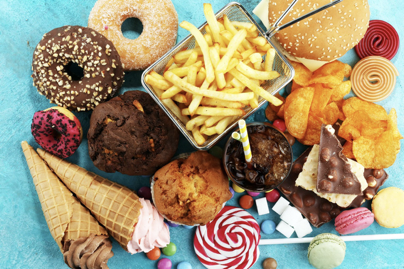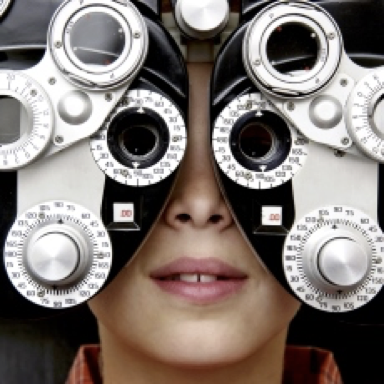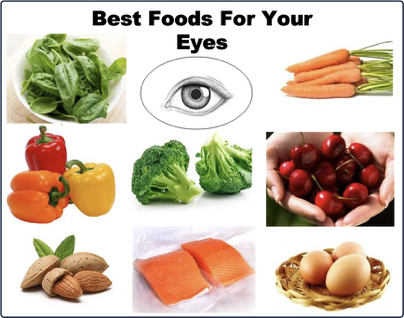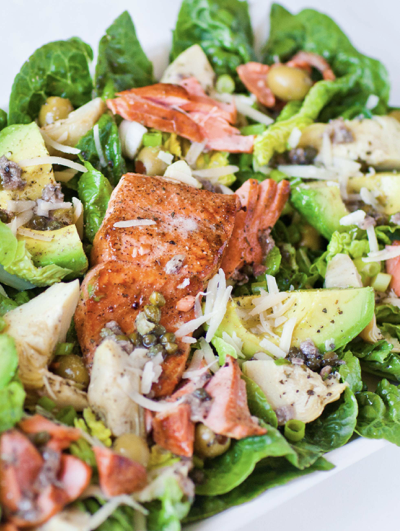How to Protect and Care for Our Eyes
Unless we’ve been living under a rock, we know junk food isn’t good for us. But specifically, did you know consistent junk-food-eating can cause or acerbate eye problems? It’s recently been shown that fatty snack foods play a big role in the development of eye diseases, especially macular degeneration. We know this is a serious issue for the elderly, but it’s also showing up more and more in younger people. So don’t quit reading if you’re one of the “younger people”!

Since our eyesight is one of our most precious commodities, we ought to know how to protect and care for our eyes. And we can start with diet, since this is an area in which we have control.
More on eye-health diet suggestions in a minute. First, let’s look at the eye diseases a healthy diet effectively addresses.
Macular degeneration, for instance, is deterioration of the macula. This is the small central area of the retina of the eye that controls visual acuity (how well you see… sharpness of vision, measured by the ability to discern letters or numbers at a given distance according to a fixed standard). This disease leads to blindness.

Besides macular degeneration, other eye diseases we want to dodge are glaucoma, cataracts, retinitis pigmentosa, and diabetic retinopathy.
There are also eye problems to seriously consider—not diseases in and of themselves, but symptoms of things to come. Examples:

So to protect our eyes, we need to find healthy alternatives to the foods we love that don’t love us back. Healthy alternatives are those that contain vitamins that actually promote eye health. For instance, look what the “vision” vitamins and nutrients can do:

Now the eye-health diet suggestions:

Since our new year, 2020, is a number that connects to the idea of excellent eyesight, why not devote this year to deliberate eye-health eating? You can see from the list above, it wouldn’t be hard. With a little planning, we can add more eye-healthy foods to our daily routine. Our Cook’n app would be the perfect way to do this, too. I’m even creating an eye-health recipe chapter!
To get us started with that chapter, here’s a salad recipe created specifically for boosting good vision:

2 heads Romaine lettuce cut into large pieces
2 cups shredded carrots
2 cups diced red bell peppers
2 cups baby spinach leaves
4 hard cooked eggs diced
1 cup baby kale leaves
2 cups snow peas cut into large pieces
3 avocados diced
2 cups cooked and chunked or flaked, cold salmon
2 cups diced cucumbers
2 cups diced tomatoes
2 tablespoons freshly squeezed lemon juice
3 tablespoons olive oil
salt to taste
pepper to taste
Capers, sliced radishes, shredded cheese, sliced almonds, etc.: all optional
Directions:

Since our eyesight is one of our most precious commodities, we ought to know how to protect and care for our eyes. And we can start with diet, since this is an area in which we have control.
More on eye-health diet suggestions in a minute. First, let’s look at the eye diseases a healthy diet effectively addresses.
Macular degeneration, for instance, is deterioration of the macula. This is the small central area of the retina of the eye that controls visual acuity (how well you see… sharpness of vision, measured by the ability to discern letters or numbers at a given distance according to a fixed standard). This disease leads to blindness.

Besides macular degeneration, other eye diseases we want to dodge are glaucoma, cataracts, retinitis pigmentosa, and diabetic retinopathy.
There are also eye problems to seriously consider—not diseases in and of themselves, but symptoms of things to come. Examples:
- inflammation of the uvea (the middle layer of the eye that contains most of the blood vessels), causes deterioration of eye tissue.
- floaters are usually normal, but can be a sign of retinal detachment (the retina at the back of your eye separates from the layer underneath).
- dry eye (eyes can't make enough good-quality tears; it can feel like something is in your eye or like it’s burning).

So to protect our eyes, we need to find healthy alternatives to the foods we love that don’t love us back. Healthy alternatives are those that contain vitamins that actually promote eye health. For instance, look what the “vision” vitamins and nutrients can do:
- Vitamin A (beta-carotene) positively affects both night vision and day-to-day eyesight; protects against macular degeneration; protects against the development of cataracts as.
- Vitamin B1 (thiamine) prevents lens deterioration.
- Vitamin E also prevents against lens deterioration.
- Vitamin C provides helps prevent glaucoma.
- Lutein helps with existing eye problems—it can actually slow down or stop their development.
- Zinc and zeaxanthin reduce the risk of vision loss and macular degeneration.
- Omega-3 fatty acids promote retina health.

Now the eye-health diet suggestions:
- Omega-3 fatty acids are found in salmon, sardines, mackerel, cod liver oil, herring, oysters, anchovies, flax seeds, chia seeds, hemp seeds, walnuts, soybeans, spinach, Brussels sprouts, and purslane.
- Zinc is found in shellfish, eggs, legumes, herring, liver, milk and other dairy, whole grains, nuts, and red meat.
- Lutein and zeaxanthin are found in dark leafy greens (kale and spinach top the list), green peas, summer squash, pumpkin, Brussels sprouts, broccoli, asparagus, romaine lettuce, carrots, and pistachios.
- Vitamin C is highest in guava, kiwi, bell peppers, strawberries, oranges, papaya, broccoli, tomato, kale, and snow peas.
- Vitamin E is highest in sunflower seeds, almonds, avocados, spinach, butternut squash, kiwi, broccoli, trout, extra virgin olive oil, and shrimp.
- Vitamin B1 is highest in lean pork chops, salmon, flax seeds, navy beans, green peas, firm tofu, brown rice, acorn squash, asparagus, and mussels.
- Vitamin A is highest in sweet potato, carrots, tuna, butternut squash, spinach, cantaloupe, romaine lettuce, red bell peppers, broccoli, and grapefruit.

Since our new year, 2020, is a number that connects to the idea of excellent eyesight, why not devote this year to deliberate eye-health eating? You can see from the list above, it wouldn’t be hard. With a little planning, we can add more eye-healthy foods to our daily routine. Our Cook’n app would be the perfect way to do this, too. I’m even creating an eye-health recipe chapter!
To get us started with that chapter, here’s a salad recipe created specifically for boosting good vision:

Eye-Happy Salad
Serving size: 10
Calories per serving: 104
Ingredients:
Calories per serving: 104
2 heads Romaine lettuce cut into large pieces
2 cups shredded carrots
2 cups diced red bell peppers
2 cups baby spinach leaves
4 hard cooked eggs diced
1 cup baby kale leaves
2 cups snow peas cut into large pieces
3 avocados diced
2 cups cooked and chunked or flaked, cold salmon
2 cups diced cucumbers
2 cups diced tomatoes
2 tablespoons freshly squeezed lemon juice
3 tablespoons olive oil
salt to taste
pepper to taste
Capers, sliced radishes, shredded cheese, sliced almonds, etc.: all optional
Directions:
Place all ingredients in large salad bowl. Just prior to serving, mix lemon juice and olive oil; sprinkle over all and lightly toss. Serve immediately.
Recipe formatted with the Cook'n Recipe Software from DVO Enterprises.
Sources:
- www.nypost.com
- www.medlineplus.gov
- www.max-40fitness.com
- www.philadelphiaeyeglasslabs.com
- www.pinterest.com
- www.tatyanaseverydayfood.com
 Alice Osborne
Alice Osborne
Weekly Newsletter Contributor since 2006
Email the author! alice@dvo.com
